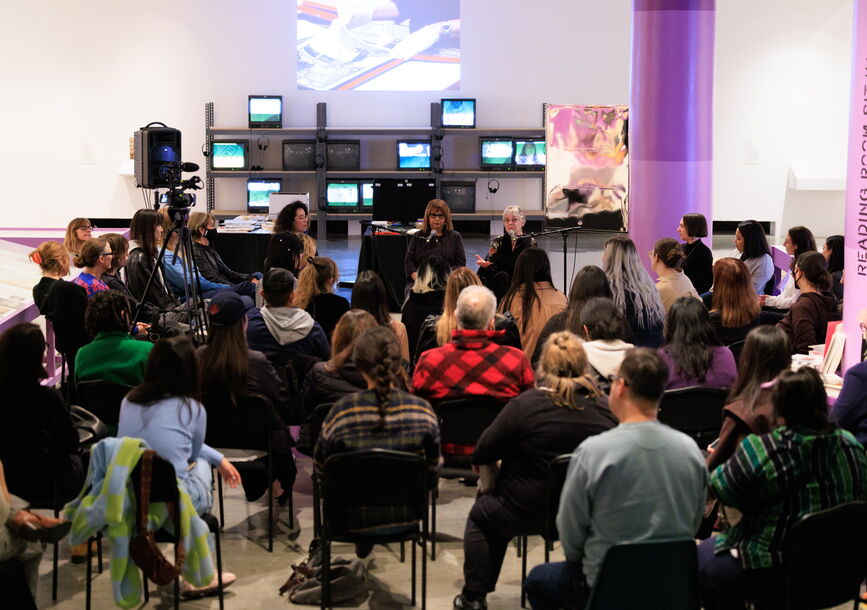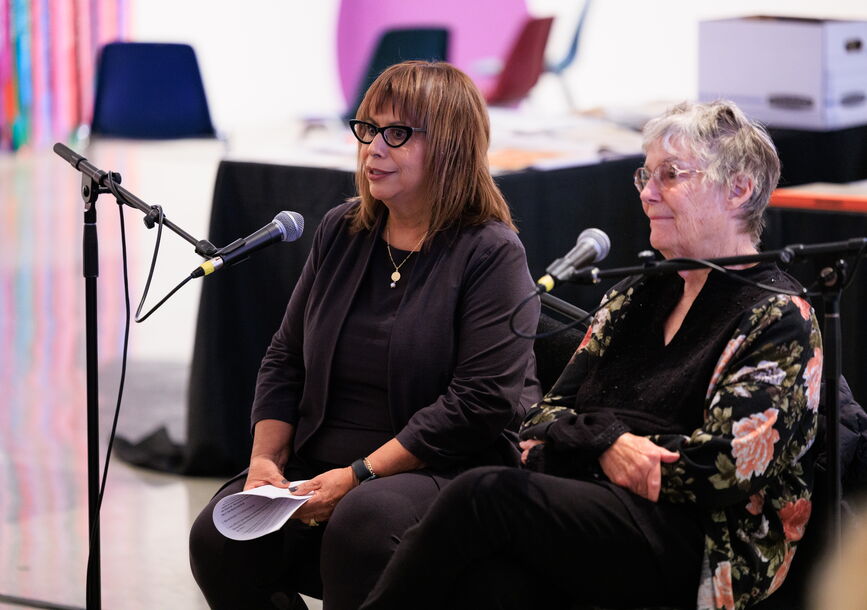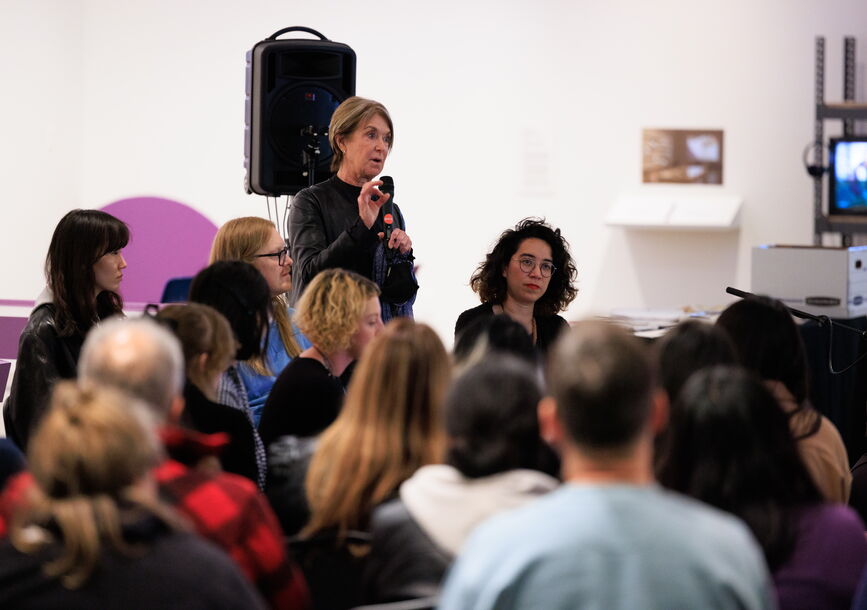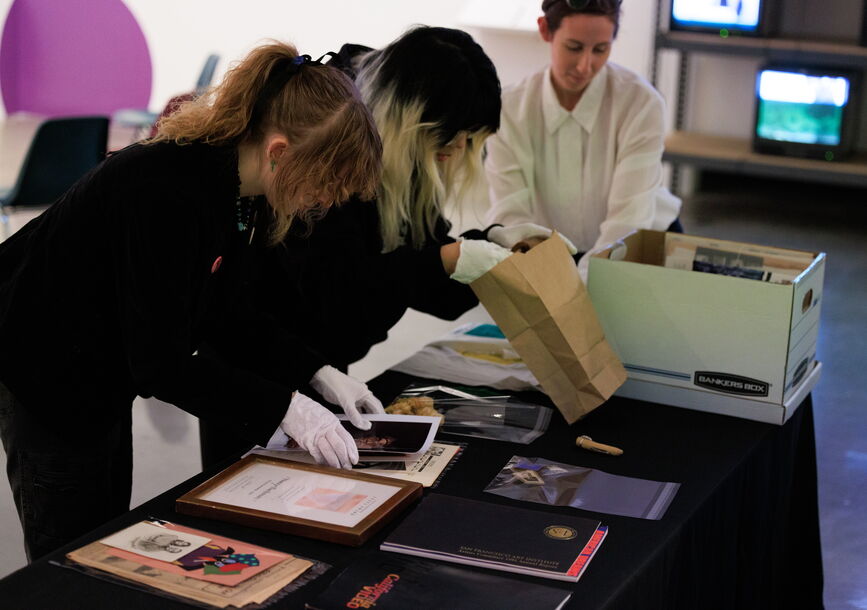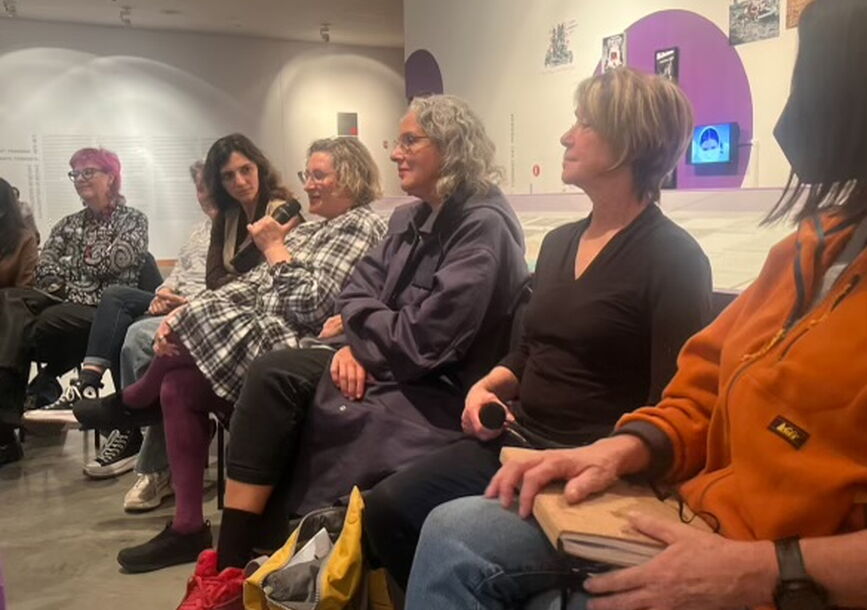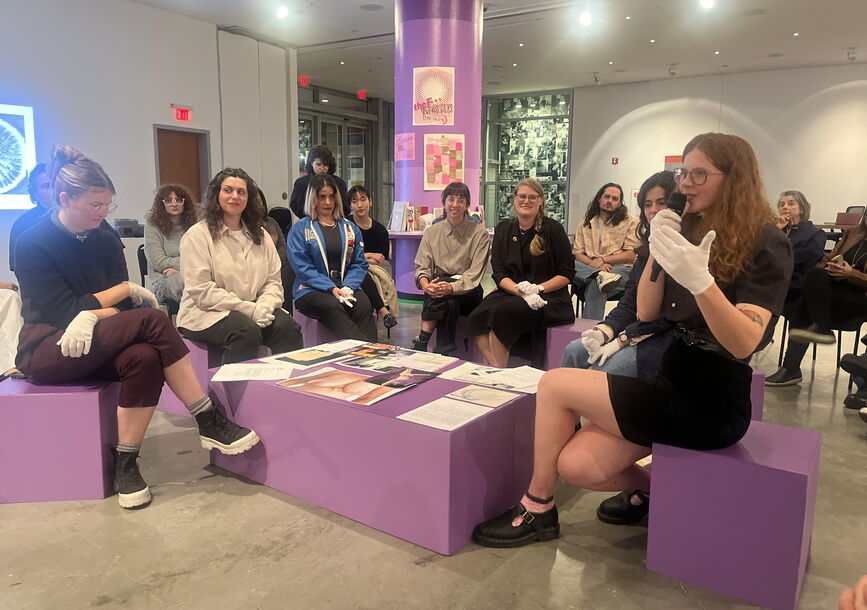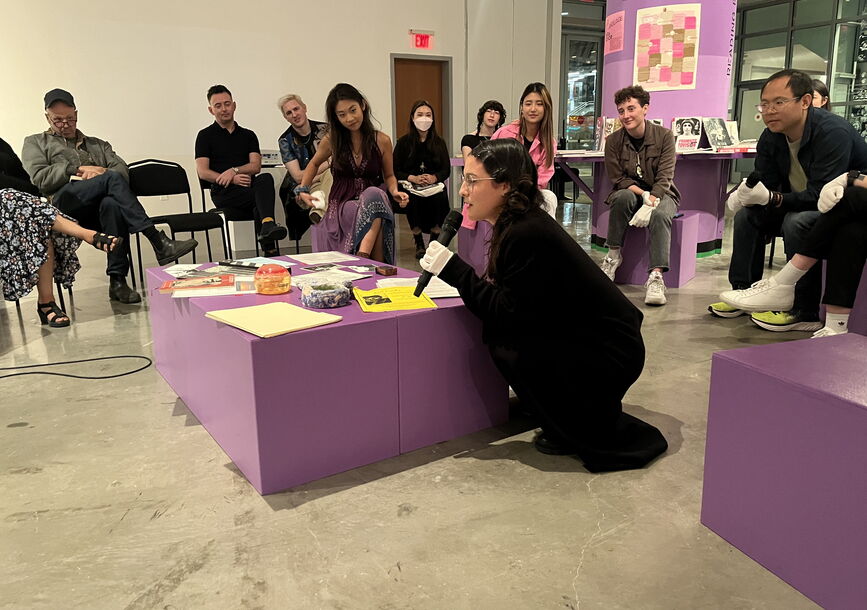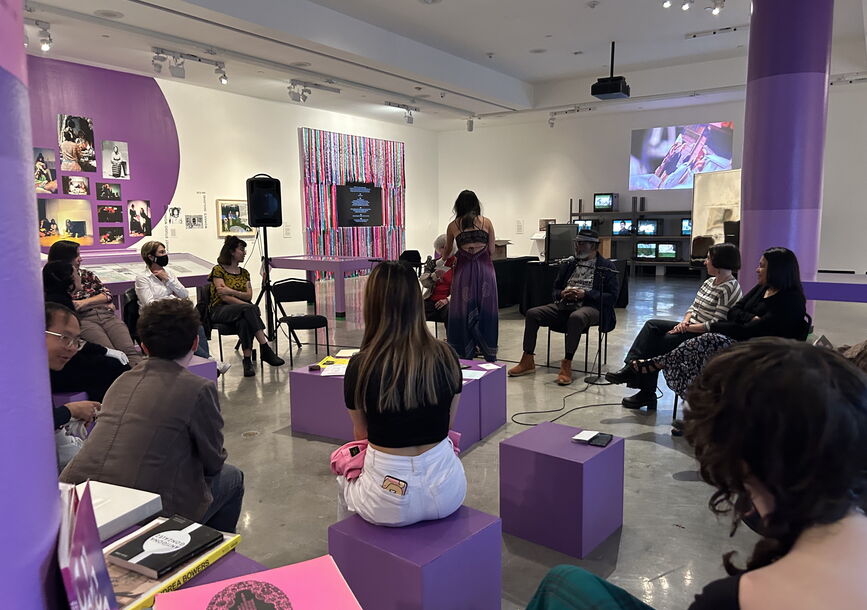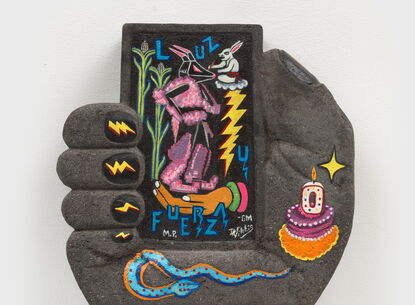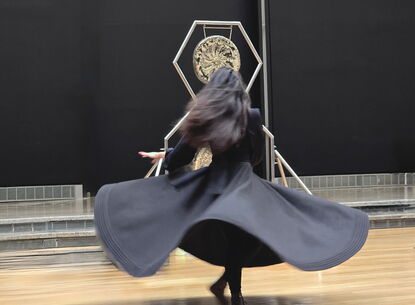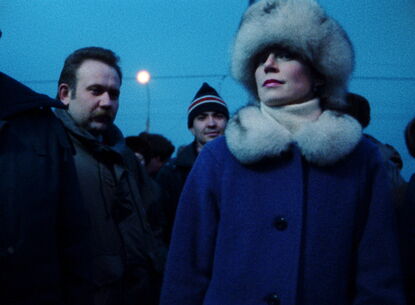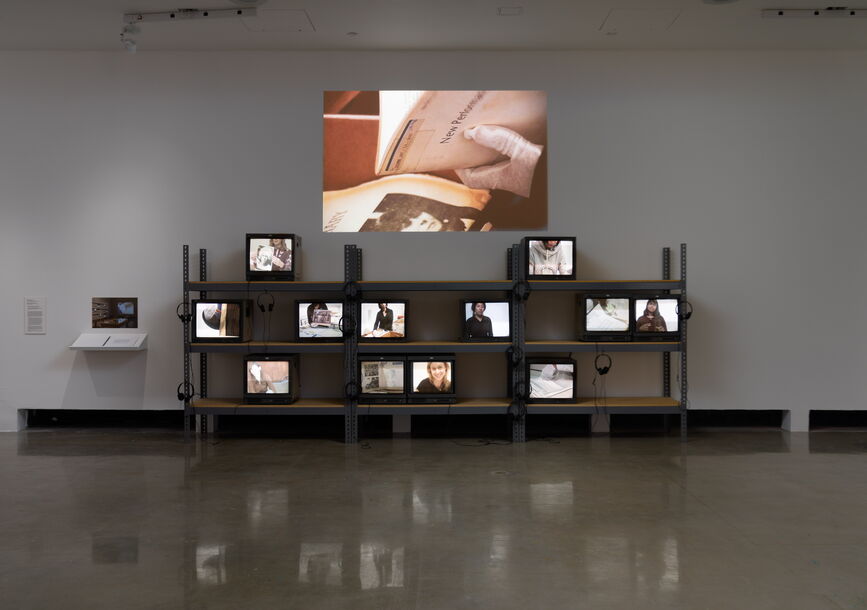
Primary Source/A Conversation
about the artists
Suzanne Lacy
Suzanne Lacy is a pioneer of socially engaged public performance art. Her installations, videos, and performances deal with sexual violence, rural and urban poverty, incarceration, labor, and aging. Lacy’s large-scale projects span the globe, including England, Colombia, Ecuador, Spain, Ireland, and the US. In 2019, she had a career retrospective at the San Francisco Museum of Modern Art and an important installation of her videos in 2021 at The Whitworth in Manchester. Her work has been reviewed in Frieze Magazine, Artforum, LA Times, New York Times, Art in America, Hyper-Allergic and The Guardian. She has exhibited at Tate Modern, The Museum of Contemporary Art LA, the Whitney Museum, Queens Museum, The Contemporary Art Center of Andalusia, the Bilbao Museum, and Reina Sofia Museum. Also known for her writing, Lacy edited Mapping the Terrain: New Genre Public Art and is author of Leaving Art: Writings on Performance, Politics, and Publics, 1974–2007. She is currently working on What Kind of City, a book with Alistair Hudson. She is a professor at the Roski School of Art and Design at the University of Southern California and a resident artist at 18th Street Arts Center.
Barbara T. Smith
Barbara T. Smith (b. 1931) is an important figure in the history of feminist and performance art in Southern California. Her work—which spans media and often involves her own body—explores themes of sexuality, traditional gender roles, physical and spiritual sustenance, technology, communication, love, and death. Smith received her BA from Pomona College in 1953, and MFA in 1971 from University of California, Irvine where she was a founding member of F-Space with Chris Burden and Nancy Buchanan. Smith’s work has been exhibited since the 1960s, and featured in group exhibitions including WACK! Art and the Feminist Revolution, Museum of Contemporary Art, Los Angeles (2007); State of Mind: New California Art Circa 1970, Orange County Museum of Art, Santa Ana; and Bronx Museum of Art, New York (2011–2013). Smith is the recipient of the Civitella Ranieri Visual Arts Fellowship, Umbria, Italy (2014); Durfee Foundation’s Artists’ Resource for Completion (2005, 2009); Women’s Caucus for Art, Lifetime Achievement Award (1999); and several National Endowment for the Arts Grants (1973, 1974, 1979, 1985). Her retrospective exhibition Barbara T. Smith: Proof is currently on view at the ICA LA.
Ulysses Jenkins
Ulysses Jenkins is a pioneering video and multimedia artist born in Los Angeles, California in 1946. A pivotal influence on contemporary art for over 50 years, Jenkins has produced video and media work that conjures vibrant expressions of how image, sound, and cultural iconography inform representation. Using archival footage, photographs, image processing, and elegiac soundtracks, his practice pulls together various strands of thought to interrogate questions of race and gender as they relate to ritual, history, and the power of the state. He received a BA in painting and drawing from Southern University (1969), and an MFA in intermedia-video and performance art from Otis Art Institute (1979), where he studied under Gene Youngblood, Charles White, Chris Burden, and Betye Saar. Jenkins is the recipient of numerous awards, including individual artist fellowships from the National Endowment of the Arts, and was named first place in experimental video by the Black Filmmakers Hall of Fame in 1990 and 1992. His work has been included in major exhibitions, including Ulysses Jenkins: Without Your Interpretation (2022) at the Hammer Museum, Los Angeles, CA; America is Hard to See (2015) at the Whitney Museum of American Art, New York, NY; Now Dig This!: Art and Black Los Angeles 1960-1980 (2012), at the Hammer Museum, Los Angeles, CA; and California Video (2008) at the Getty Center, Los Angeles, CA. Jenkins is currently Associate Professor in the Claire Trevor School of the Arts and an affiliate professor in the African American Studies program at the University of California, Irvine.
Nancy Buchanan
Nancy Buchanan is a conceptual artist working in various forms: performance, video, installation, drawings, and mixed-media work. She was a founding member of F Space Gallery, and showed at the Los Angeles Woman’s Building, continuing feminist support work as a member of Double X.
Buchanan’s work has been included in exhibitions at the Museum of Modern Art, the New Museum, MOCA Los Angeles, the Centre Pompidou, the Carnegie International, and the Getty Research Institute (where her papers and video works are archived). She is represented by Charlie James Gallery, where she has had solo shows in 2017 and 2020. Buchanan is the recipient of four National Endowment for the Arts Individual Artist grants, a COLA grant, and a Rockefeller Fellowship in New Media.
Patssi Valdez
Patssi Valdez is a visual artist and a founding member of the art collective ASCO. Her artistic contributions in ASCO challenged the dominant narrative of the Chicano Movement and Chicano Art to provide an expanded and contemporary vision of Chicana/o identity. Born and raised in East Los Angeles, Valdez received her BFA from Otis Art Institute in Los Angeles and was named outstanding alumni in 1985. In her visual art practice, including performance art, photography, painting, paper fashion and installation, Valdez works to capture her internal world and spaces she both inhabits and re-imagines. Since the late 1980s Valdez has gone on to develop some of her most recognizable works, a body of images that are Neo-Expressionistic and Surrealistic in form and content and are both autobiographical while also pushing back on traditional depictions of American domesticity and Chicanismo. Her work has contributed to an ongoing Chicana feminist critique and examination of the sociopolitical reality of the Chicana/o community living in the United States. In 2005, she was named the “Latina of Excellence in the Cultural Arts” by the U.S. Congressional Hispanic Caucus. She is the recipient of many prestigious awards, including from the J. Paul Getty Trust Fund for the Visual Arts, National Endowment for the Arts, and the Brody Arts Fellowship in Visual Arts. Valdez has exhibited in numerous solo and group exhibitions such as: Les Démons Des Anges, Halle du Centre de Recherche pour le Développement Culturel, Nantes, France, 1989; A Precarious Comfort, The Mexican Museum, San Francisco, CA, 1999; ASCO No Movies, (Touring Exhibition 2013-2014) Nottingham Contemporary, UK, 2013; Radical Women: Latin American Art, 1960-1985. Hammer Museum, Los Angeles, 2017; and L.A. Memo Chicana/o Art 1972-1989, La Plaza de Cultura y Artes, Los Angeles, 2022. Her work is highlighted in the newly inaugurated Cheech Marin Center for Chicano Art & Culture in Riverside, California, 2022. Her artwork is included in major collections, including the National Museum of American Art, Smithsonian Institution, Washington D.C.; The Whitney Museum of American Art, New York; The Tucson Museum of Art, Arizona; The San Jose Museum of Art, California; and the El Paso Museum of Art, Texas. Valdez continues making art in her studio in Los Angeles.
Susan Mogul
Having been involved with video since the early 1970s, Susan Mogul is a pioneer of the medium. Initially producing an important series of humorous and staunchly feminist performance videos, her practice quickly expanded to more complicated and experimental forms of narrative, including feature length work. Mogul has received a Guggenheim Fellowship, ITVS commission, National Endowment for the Arts Fellowship, Getty Trust Fellowship, and Center for Cultural Innovation grants. Her work has been featured in historic exhibitions, such as California Video at The Getty Museum, 2008 and Los Angeles: Birth of an Art Capital at the Pompidou, 2006. Mogul’s film retrospective was presented at “Visions du Reel” Film Festival in Switzerland in 2009. Driving Men a feature length documentary, screened in international competitions in Japan, Portugal, Switzerland. In 2020, Kristina Newhouse published “A Feminist’s Survival Index,” a major essay about Mogul’s work and its significance to the history of feminist art and Los Angeles art in the arts quarterly X-TRA. Mogul’s first solo museum exhibition took place at the Zacheta National Gallery of Art in Warsaw, Poland in 2022. The Austrian Film Museum in Vienna will present a survey of Mogul’s films in 2023.
Linda Vallejo
Linda Vallejo creates work that visualizes what it means to be a person of color in the United States. She states that these works reflect what she calls her “brown intellectual property”—the experiences, knowledge, and feelings gathered over more than four decades of study of Latino, Chicano, and American indigenous culture and communities. In 2022 Vallejo was awarded the National Women’s Caucus for the Arts Lifetime Achievement Award. Recent solo exhibitions include the Robert and Francis Fullerton Museum of Art at CSU San Bernardino, LA Plaza de Cultura y Artes, Los Angeles, Kean University, Karl & Helen Burger Gallery, New Jersey, and Texas A&M University Reynolds Gallery. Her work is included in the permanent collections of the Eileen Harris Norton Collection, Los Angeles, CA; Museo del Barrio, New York, NY; and National Museum of Mexican Art, Chicago, lL.
